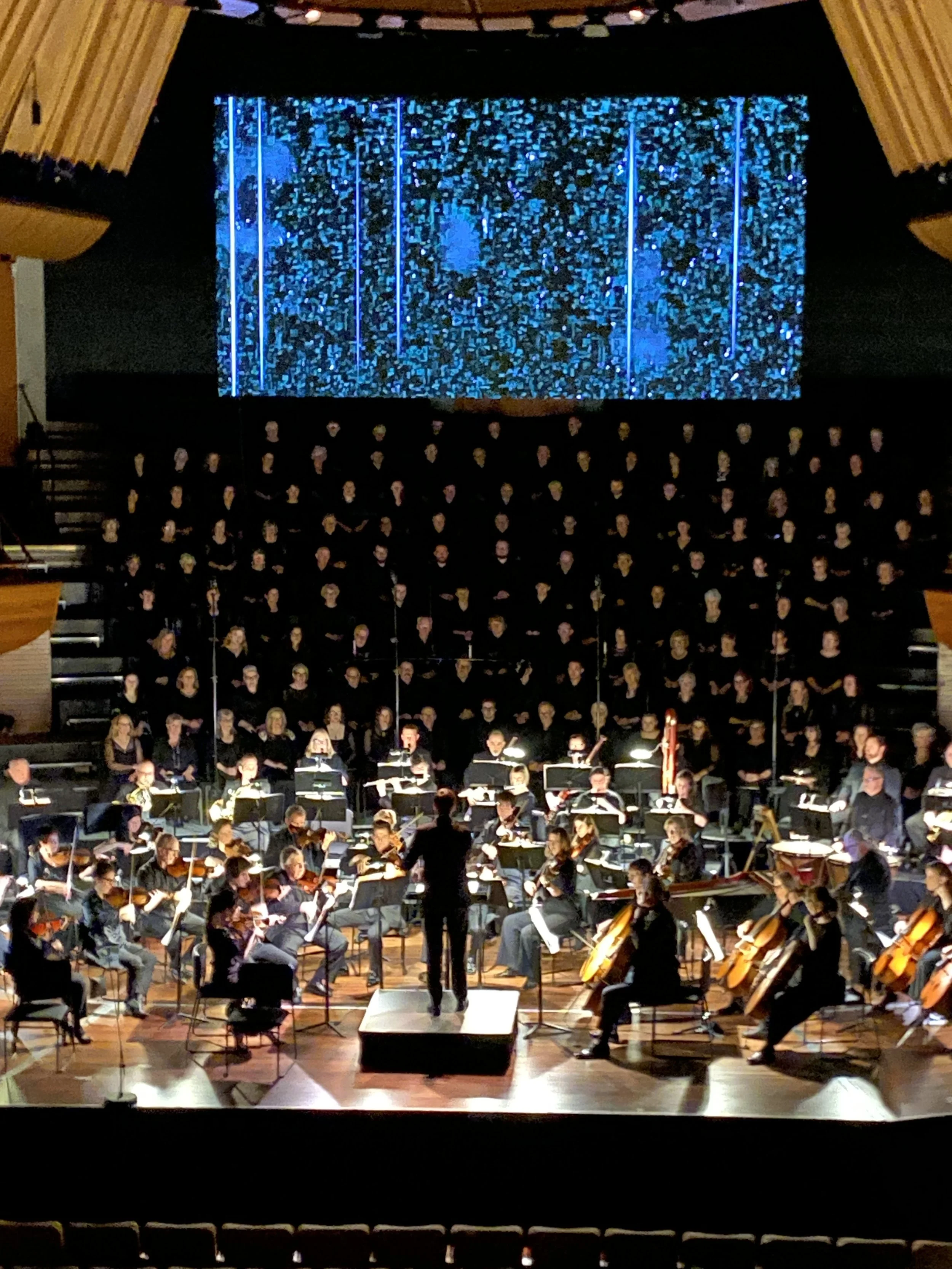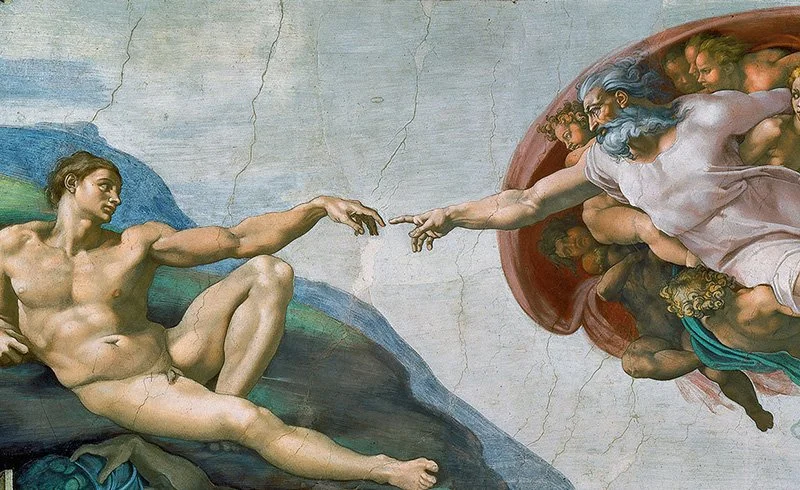Orpheus Choir and Haydn’s The Creation: fine singing and radiant music
Haydn’s The Creation is less-often performed than many of the great choral masses and oratorios of the Baroque and classical periods, so this presentation by the Orpheus Choir was a welcome opportunity to hear a work regarded by its composer and others as one of his greatest masterpieces.
The Creation was written late in Haydn’s life, inspired by the oratorios of Handel that he had heard in London. Musically, it is brilliantly engaging, a highly original score full of rich contrapuntal textures and inventive melodies. Haydn’s creation story is optimistic and radiant, reflecting Enlightenment ideals of a harmonious relationship between human beings and nature.
Structured in three parts, it tells the story of the six days of creation, using a libretto inspired by both the Bible and Milton’s Paradise Lost. It was ultimately fashioned by Haydn’s patron Baron Gottfried van Swieten and reflected the cultural influences of the period. The work was apparently composed to a German text, then translated into English, and Die Schöpfung/The Creation was published in 1800 in the two languages it is sung in today.
The Creation
…as painted by Michelangelo in the Sistine Chapel in Rome.
Using the colours of the orchestra to underline and illustrate the story, Haydn employed his usual theatrical elements of surprise and wit. With three vocal soloists, he created recitatives, arias, duet and trios that are musically beautiful and full of emotion, telling the story amongst majestic and stirring choruses. In parts 1 and 2 the soloists represent archangels Raphael (bass), Uriel (tenor) and Gabriel (soprano). In part 3 the bass and soprano become Adam and Eve, depicting an idealised blissful life in Paradise before “the fall”.
A trio of soloists sang in this performance, soprano Anna Leese, tenor Frederick Jones and bass-baritone Joel Amosa. The performance began in almost total darkness, representing chaos. Amosa entered in the gloom, during the orchestral introduction, and sang the musically dark recitative “In the beginning God created Heaven and Earth” answered by the chorus “And the spirit of God moved”.
One of the most famous moments in the work is the first chorus early in part 1: “…and God said, Let there be light and there was light.” The key changes from C minor to major and the chorus roars forth with a sudden fortissimo. The Orpheus Choir in full voice is a dramatic and open-throated beast and the effect was electrifying. An ecstatic explosion of musical light and colour filled the hall.
It was a night of very fine singing. Under its talented music director Brent Stewart, the Orpheus Choir has developed hugely and sings with fine open tone, consistently clear diction and a jubilant freedom that matched this music perfectly. Their work in Haydn’s challenging contrapuntal choruses was very accomplished, as in their bold fugal entries of the Part 1 chorus “Awake the harp” and the big, repeated chorus “Achieved is the glorious work” in Part 2.
Soprano Anna Leese
“…musicianly phrasing, exquisite clarity and a beautiful voice.”
The soloists play a major role in The Creation and Leese showed her musicianly phrasing, exquisite clarity and beautiful voice in numerous recitatives and arias. “With verdure clad” in Part 1 was an early highlight, and in “On mighty pens uplifted soars the eagle aloft”, paired with flute, her voice soared like the birds Haydn evoked so joyously.
Jones is a New Zealand tenor who works in Aotearoa, Britain and Europe and has sung with the Orpheus and other New Zealand ensembles before. His role advances the narrative with numerous recitatives, which he sang with stylish musicianship and fine diction. His is not a big voice but his performance balanced well with orchestra and in trios with the other soloists. His lovely Part 2 aria “In native worth” was beautifully judged, with a notably fine and melodious performance by the cello section in accompaniment.
Amosa, who won the Lexus Song Quest in 2018, brought his operatic style and fine bass voice to Haydn’s work, and his duets with Anna Leese in the more theatrical Part 3 captured the emotions of the “happy blissful pair” of Adam and Eve. His voice is warm and ringing, particularly in lower registers, and his recitatives were delivered in a nicely declamatory style.
Conductor Brent Stewart
“…shaped Haydn’s music with thoughtful and capable direction.”
Photo credit: Steve Montgomery
Highlights of Part 2 were these three fine solo voices combined in several Trios, demonstrating how well-matched they were in tone and musicianship. The Trio “On thee each living soul awaits” near the end of Part 2 was genuinely moving, beautifully accompanied first by woodwinds and horns, then low strings and finally the whole string section. These ensemble pieces were splendidly managed by Stewart, who shaped the music throughout with thoughtful and capable direction.
An 18th century-sized Orchestra Wellington, led by violinist Amalia Hall, distinguished itself throughout the performance, in both accompaniment and orchestral linking sections, with many fine individual performances. Haydn uses orchestral timbres to paint the story, depicting the many aspects of nature, oceans, animals, fish and birds, and the beauties of Eden, and the musicians played their colourful roles with skill and poise.
The performance was marketed as a “re-imagining” of The Creation. I wished that Stewart, in directing this performance, had trusted Haydn and his music to illustrate the story without resorting to the huge cinematic LED screen that dominated so much of the work. Of the first performance in Germany in 1798 someone said: “At that moment when light broke out for the first time, one would have said that rays darted from the composer's burning eyes.” In this performance, the screen reflected the musical explosion with such bright lights and colours we were dazzled in an almost uncomfortable way, and Haydn’s “burning eyes” were eclipsed.
Bass-baritone Joel Amosa singing with the Orpheus Choir and Orchestra Wellington
Photo supplied
Sadly, the images on screen often distracted us from an excellent musical performance. Some were of dubious artistic quality, questionable relevance or were overly, naïvely literal. We didn’t need images of whales when the text told us “God created great whales”, or roiling oceans to enhance the bass aria “Rolling in foaming billows.” The music roared when the lion roared, and the on-screen image seemed merely a comical underlining of the effect. While Anna Leese sang “on mighty pens uplifted”, an extended and sometimes awkward sequence of soaring birds on screen distracted us from her fine singing and Haydn’s beautiful accompaniment.
In Part 3, dancers Airu Matsuda and Jemima Smith from Footnote Dance Company underlined the Adam and Eve story with sinuous movements across the stage, becoming ever more entwined. At this point in the oratorio, all is becoming more theatrical and the singing more operatic, but this dance sequence, though well done, also seemed superfluous. The love story is in the music.
I don’t believe images and dancers mean the work is being “reimagined”. Our own imaginations can supply the visual images that the music suggests and implies, the English text, sung with clear diction, tells us what’s happening and the additions here were merely illustrations, and of much less artistic value than Haydn’s musical work.
Congratulations to Brent Stewart and the Orpheus Choir, soloists and Orchestra Wellington on a splendid musical performance of Haydn’s The Creation. Let’s all leave our screens at home next time.
Orpheus Choir Wellington: Haydn’s The Creation Brent Stewart (conductor), Anna Leese (soprano), Frederick Jones (tenor) Joel Amosa (bass) Orchestra Wellington, Footnote Dance Company Wellington, 24 August 2024





